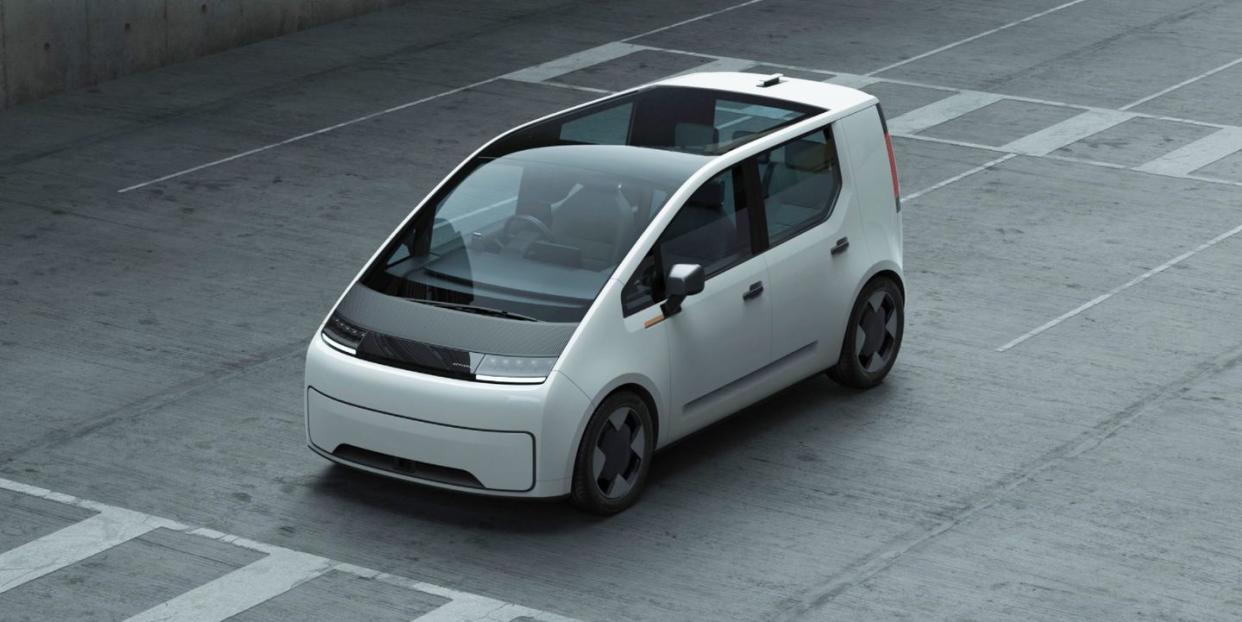Arrival Reveals EV Just for Ride-Hailing Drivers

Arrival worked with Uber drivers over the course of several months to design a car for ride-hailing drivers.
The EV start-up is focusing on last-mile delivery vans, with plans to build them in its microfactories in Europe and the US.
The Arrival Car, based on the start-up's skateboard platform, was designed to prioritize driver comfort, cost, and uptime, and features a large rear passenger compartment.
EV start-up Arrival has revealed the design of a new, planned model aimed at ride-hailing services. The UK-based company has been working with Uber drivers for the past six months on the layout and design of the concept, one meant to prioritize passenger comfort and space, while also focusing on driver comfort, safety, and uptime, since these vehicles are expected to cover about 30,000 miles a year.
Dubbed simply the Arrival Car, the concept has been designed with urban environments in mind, featuring a tall body, short wheelbase and nose, wheels at the four corners of the its footprint, and a generously-sized rear passenger compartment with room for suitcases. It also features a long windshield that transitions into a transparent roof, meant to illuminate the interior with natural light. It has some things in common with the prototypical London cab, including a tall stature, long rear doors and plenty of legroom for rear-seat passengers, as well as some things in common with innovative, small MPVs like the Audi A2 or the Ford Transit Connect.
Overall, the design also has a number of similarities to the Arrival Van, developed for UPS and other businesses.
"This is a key milestone for Arrival and we're thrilled today to be releasing the first look at the Arrival Car. Over the past six months, we have been working closely with Uber's drivers to create a vehicle specifically for the ride hailing industry, and making it affordable, durable, and great to look at,” said EVP Vehicle Platforms at Arrival, Tom Elvidge.
Arrival hasn't mentioned the concept car's drivetrain specs at the moment, but has mentioned that it intends to start testing quite soon, ahead of an expected market debut in 2023. However, the start-up has made it clear early on that its proprietary skateboard platform would underpin its EVs, and will simply feature different bodies.
Also, while the start-up itself is experimenting with autonomous technology, no mention of any level of possible autonomous features has been made in regards to the Car. It appears that it really is meant for ride-hailing human drivers, even as other developers are preparing for an impending Level 4 ride-hailing future.
Like its other offerings, the Car is expected to be built in Arrival's Microfactories, at least two of which will be located in the US. The start-up has recently revealed that it is building a High Voltage Battery Module (HVBM) assembly plant in Charlotte, North Carolina, which will be the company's third facility in the city, which is also serving as its North American headquarters. Another Microfactory will be in Rock Hill, South Carolina. The start-up plans to assemble its own battery modules instead of relying on suppliers.
However, Arrival hasn't detailed where it intends to offer the Car first, how much it will cost, and whether Uber will offer some kind of leasing or rental program for its drivers. At least not yet.
"Electrifying ride-hailing will play a crucial role in reducing the emissions of vehicles in cities globally, providing a sustainable, clean, multi-modal transportation system for communities," Elvidge added. "We are keen on supporting drivers with this transition by developing the best possible product for ride hailing that elevates the experience for both them and their passengers, making urban air clean in the process."
One of the biggest questions at the moment is whether the Arrival Car will be a compelling choice for private buyers who are not ride-hailing drivers, if its range and price converge in a certain sweet spot. The concept has quite a bit going for it as a roomy crossover, the kind that the Tesla Model Y never quite ended up being, because it opted for being a slightly taller version of the Model 3. The box-like design of Arrival's concept appears to be the antithesis of all the coupe-shaped electric crossovers about to flood the market, and it manages to look quite inviting and futuristic on its own.


